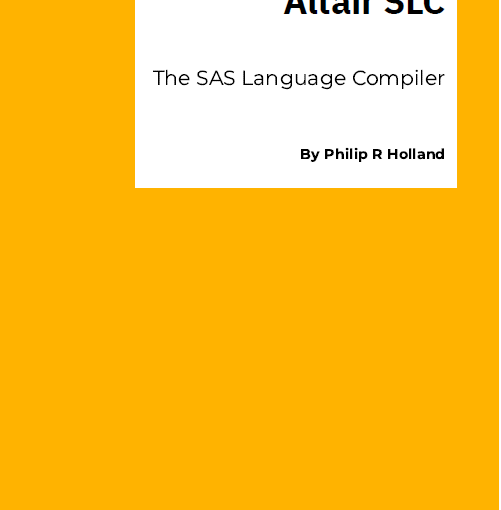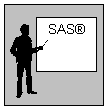![]()
I am researching for 3 new Altair SLC books to add to my recently published book about Altair SLC. They will look into a range of aspects and programming using full licences, unlike my previous book that concentrated on the free Community Edition (now called the Personal Edition), and also more advanced aspects available in the Personal Edition, but not included in my previous book, such as Workflows, clinical data analysis and ODBC database connections.
What information would you like to read more about in the new books?
I have already been trying out the Communicate and Link features of Altair SLC, and hope to extend this to the Hub very soon.
My provisional book titles are:
- Advanced Altair SLC
- Altair SLC for Business Users
- Altair SLC for Companies
Thanks in advance….…Phil
Altair Community post: I am researching for 3 new Altair SLC books
Altair SLC: The SAS Language Compiler (paperback) – Second Edition

The book concentrates on Altair SLC, looking at the pros and cons of using Altair SLC to develop SAS programs. Code samples are provided throughout this book, so you can learn more about Altair SLC and SAS programming by following these examples.
Topics included:
- What is Altair SLC?
- Introduction to Altair Analytics Workbench
- Altair SLC for Clinical Trials
- Generating Graphics with Altair SLC
- Using Altair SLC with R and Python
Download for free the SAS programs in this book from here.
Note: these chapters are included in SAS Programming Experiences: A How-To Guide from a Power SAS User, so, if you have already purchased this book, then you already have these chapters!
![]()
- What is Altair SLC?
- Introduction to Altair Analytics Workbench
- Altair SLC for Clinical Trials
- Generating Graphics with Altair SLC
- Using Altair SLC with R and Python
Altair SLC: The SAS Language Compiler (PDF) – Second Edition

The book concentrates on Altair SLC, looking at the pros and cons of using Altair SLC to develop SAS programs. Code samples are provided throughout this book, so you can learn more about Altair SLC and SAS programming by following these examples.
Topics included:
- What is Altair SLC?
- Introduction to Altair Analytics Workbench
- Altair SLC for Clinical Trials
- Generating Graphics with Altair SLC
- Using Altair SLC with R and Python
Download for free the SAS programs in this book from here.
Note: these chapters are included in SAS Programming Experiences: A How-To Guide from a Power SAS User, so, if you have already purchased this book, then you already have these chapters!
![]()
The book concentrates on Altair SLC, looking at the pros and cons of using Altair SLC to develop SAS programs. Code samples are provided throughout this book, so you can learn more about Altair SLC and SAS programming by following these examples.
Topics included:
- What is Altair SLC?
- Introduction to Altair Analytics Workbench
- Altair SLC for Clinical Trials
- Generating Graphics with Altair SLC
- Using Altair SLC with R and Python
Download for free the SAS programs in this book from here.
Note: these chapters are included in SAS Programming Experiences: A How-To Guide from a Power SAS User, so, if you have already purchased this book, then you already have these chapters!



